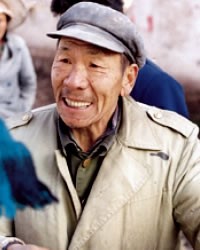The Han Chinese are the largest ethnic group in the world. Although the vast majority live in mainland China, many have immigrated to other countries, and today they reside in nearly every nation of the world. In a number of these countries, including Laos, Nepal, Tanzania, Cambodia, and Thailand, the Chinese communities remain largely unreached with the gospel.
Most Han Chinese speak one of the many Chinese dialects, which include Mandarin, Cantonese and Hokkien. The speakers of one Chinese dialect cannot understand the speakers of another, but they can understand it when it's in written form. Other Han Chinese people speak the Min Nan dialect.
The Han Chinese began fleeing to other countries in 1276 after the Mongol invasion. Many other upheavals and conflicts followed, and the Chinese continued to settle in other nations, particularly in Cambodia and other places in Southeast Asia. Wherever they went, the Chinese settled almost exclusively in urban areas and became involved in business and commerce. Today, they are very influential in the economies of many of these nations, though they represent only a small percentage of the population. They live in several countries including Cambodia.
The Min Nan Chinese continue to live primarily in cities. In several countries many of them are businessmen. Their businesses range from small shops to international corporations. They live in a wide variety of houses, ranging from small apartments to costly mansions. Most of them have retained their traditional rice-based diet. The Min Nan Chinese in Cambodia have maintained their culture and language. They have also continued living by their traditional Chinese customs, especially those regarding marriage and the family. One of the primary reasons they have kept their own languages and customs is because they have a deeply ingrained belief in the superiority of their culture.
The Han Chinese treat their children affectionately and usually indulge boys more than girls. The children are pushed to do well in school and are given much time to devote to their studies. The Min Nan Chinese are known for their politeness and will go to great lengths to avoid disputes. However, once a dispute begins it is very difficult to stop because they place a high value on "saving face." Giving ground in an open dispute would cause them to lose face—something the Chinese try to avoid at all costs.
The Min Nan Chinese have generally maintained their traditional Chinese religion, which is characterized by a blending of philosophies. Over the course of time, it has added elements of Buddhism, Confucianism and Taoism. Their beliefs are centered around the concept of maintaining harmony. They consult horoscopes to determine what course of action will promote harmony and bring good luck. They also believe in a pantheon of spirits who inhabit the earth. The spirits of their ancestors supposedly roam the earth, and if treated properly, are benign and bring good luck. They believe ghosts exist as the spirits of people who are angry at the circumstances of their death; these spirits are said to be malicious and capricious. Deities are supposedly the souls of people who lived especially virtuous lives. The belief is that they have spiritual powers that can be used to benefit those who worship them.
Although the Min Nan Chinese still claim adherence to these beliefs, they seem to have little effect on their everyday lives. In fact, many of them are non-religious in practice.
The Diaspora Chinese are often mistreated in the lands in which they live. In some countries there have been anti-Chinese riots. In nearly all the countries, nationals are envious of the Diaspora Han Chinese because of their success in business, commerce and trade.
The Han Chinese suffer from great spiritual needs. Cambodia is open to the gospel, and the Min Nan dialect has a complete Bible, even in audio form.
Thank God for the openness to the gospel in Cambodia and pray for the church to take advantage of the opportunity to reach out to the Min Nan Chinese.
Pray for the Lord to provide for the Min Nan Chinese people's physical and spiritual needs and that they will understand this as an example of God's grace and mercy.
Pray for the Lord to thrust out Holy Spirit-anointed workers to the Min Nan Chinese in Cambodia.
Pray for a movement to Christ that results in disciples and churches multiplying through generations.
Scripture Prayers for the Han Chinese, Min Nan in Cambodia.
| Profile Source: Joshua Project |











